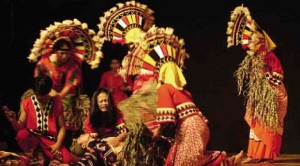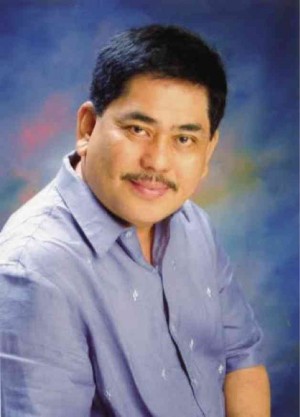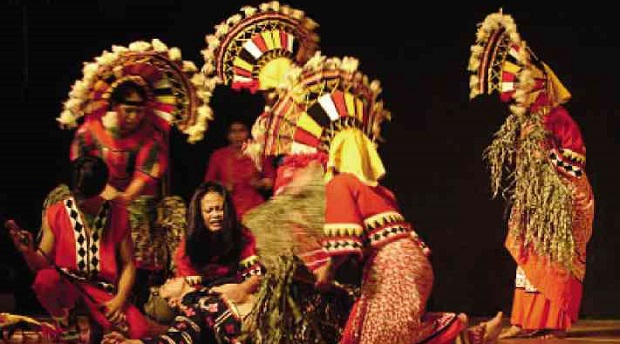
It all began in January-February 1974 when playwright-director Frank G. Rivera and other colleagues from the Philippine Educational Theater Association (Peta) were invited by Rufino Ignacio, vice president for academic affairs of the Mindanao State University (MSU) in Marawi City, Lanao del Sur, to do a three-day workshop there.
Like Hans Castorp in Thomas Mann’s memorable “The Magic Mountain,” who expected to stay in a Swiss Alps sanatorium for only three weeks but stayed on for seven years, Rivera believed he would stay in Marawi for only three days, but ended up staying there for many years.
Ignacio asked him to stay on and direct a Peta play, which led to a Joycean epiphany. A Marano, Nagasura Magalit, initiated Rivera on the intricacies of Maranao culture. Afterward, they attended a Maranao wedding in the town of Bayang across Lake Lanao.

“I really felt guilty,” recalled Rivera. “I realized that who are we, we in Manila who bring art to the masses and miseducate them by teaching them the Stanislavski Method, when here in Marawi they have a theater as good as Western Theater.”
So he stayed on to teach at MSU, was given the title of Visiting Professor and formed the theater group Sining Kambayoka (the root word being bayok, a traditional Maranao drama with two versifiers acting out a story).
“It’s a joustic poetry,” notes playwright Arthur Casanova, who has written a book titled “The Kambayoka Story.” “It’s similar to the Balagtasan and Batutian of the Tagalogs, Crisottan of the Pampangos, Bukanegan of the Ilocanos, Balak of Cebuanos and Tigsik of Bicolanos.”
Groundbreaking
The first Sining Kambayoka play Rivera wrote and directed was the groundbreaking “Mga Kwentong Maranao,” bringing together folk tales of the Maranaos, including the story of one Pilandok who was at first a kind of Juan Tamad of the South and who had a flying mat (banig). Some of the students composed the music and the sets; props and the costumes all came from the cast and chorus.

“Mga Kwentong Maranao” was premiered at MSU in July 1974, and was brought to Manila on Dec. 30 that year.
Reminiscing about that fateful night, the playwright waxed nostalgic: “More than two decades before Broadway sent Jasmine and Aladdin to a whole new world, Pilandok in ‘Mga Kwentong Maranao’ unfolded his banig before a 1974 SRO audience at the Peta open-air theater in Fort Santiago, and opened up new possibilities for Kambayoka.”
Rivera added: “Suddenly MSU was in the cultural map and in the consciousness of the mainstream artistic community.”
Youthful verve
Sining Kambayoka became the official theater group of MSU, and in the years that followed there were many more productions, like “Halik sa Kampilan,” the Maranao version of “Ibong Adarna,” and “Alamat ng Sarimanok.”

The contents were not limited to Maranao themes, as there was also “Uyayi,” the prophetic environmental musical “Ambon, Baha, Ulan,” one of Kambayoka’s bestsellers, and many other new, contemporary zarzuelas.
Kambayoka plays are a visual and audio feast, with gorgeous costumes, dances, indigenous and Western musical instruments, the languages a mixture of Tagalog, Visayan and Maranao (and sometimes with English translations for foreign audiences), and with youthful verve.
Every year there were new members, and when they graduated they went all over Mindanao to form Kambayoka-style groups. They toured Europe and the US, and there is now a chapter in Los Angeles.
The group has reaped many awards, including the Cultural Center of the Philippines Gawad Award. The artistic director is now Pepito Sumayan, and Sonny Noel the executive director.
Grand reunion
On May 9, anniversary celebrations will begin at the MSU. Kambayoka members will plane in from many parts of the world for a grand reunion. There will be performances, programs, toasting, a lot of reminiscences, music and merrymaking, and a peek into the theater group’s outlook for the future.
“Why is Kambayoka important?” the founder asks. “Before, traditional theater was almost a secret, but now it is alive; we changed the state of theater in Mindanao. Pilandok and his flying banig took us to many distant places, and set us free.”













































